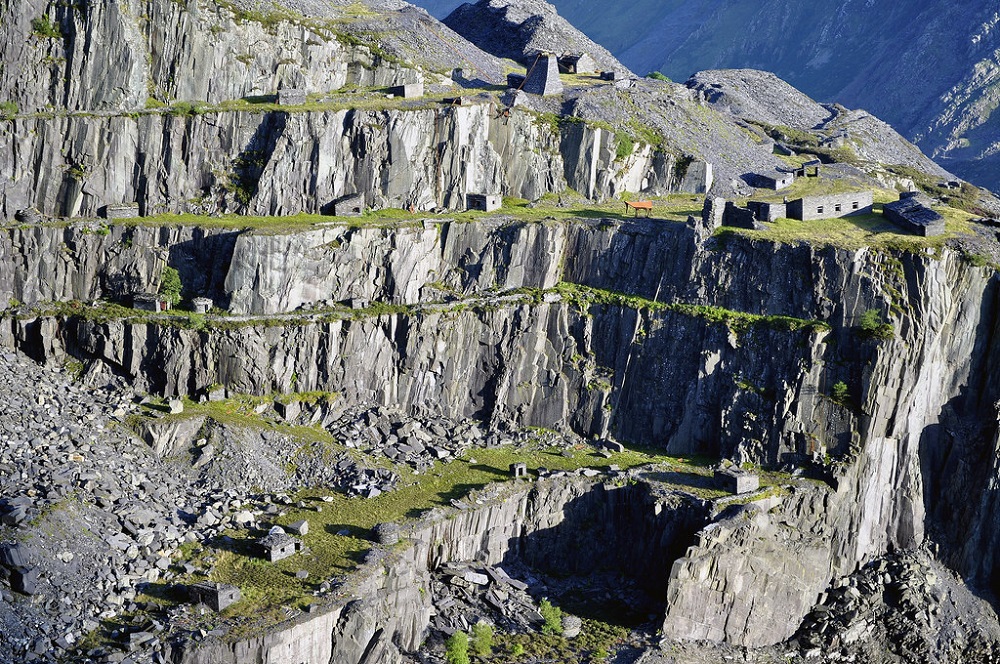UNESCO considers World Heritage Site status for Wales’ historic slate landscape

The result of a bid to secure World Heritage Site status for the slate landscape of north-west Wales will be announced later this week.
The decision will be announced by the UNESCO World Heritage Committee, which is meeting in Fuzhou, China and virtually online and is also considering bids from Bologna, Nice and the Ribeira Sacra wine district in Spain.
The origins of the slate industry Wales date back to the Roman period but it expanded rapidly in the 19th century with Penrhyn and Dinorwig becoming the two largest slate quarries in the world and the Oakeley mine at Blaenau Ffestiniog was the largest slate mine the world.
The bid-led by Gwynedd Council is a partnership between a number of organisations including Snowdonia National Park, the National Trust, Bangor University, the Welsh Government, Cadw, Royal Commission on the Ancient and Historical Monuments of Wales and the National Museum and includes the communities of Dyffryn Ogwen; Dinorwig; Dyffryn Nantlle; Cwmystradllyn and Cwm Pennant; Ffestiniog and Porthmadog; Abergynolwyn and Tywyn.
“The nomination of the Slate Landscape of Northwest Wales for World Heritage status is about recognising and celebrating what has been achieved here in our slate valleys on a global level,” Councillor Gareth Thomas, Gwynedd Council’s Cabinet Member for the Economy and Community, said.
‘We are delighted that all the hard work involved in the application has reached this exciting stage of the process and we’re looking forward to the final decision this week.
“As part of the bid, our aim is to regenerate our communities and to help provide a better understanding of the significance of the Welsh slate industry and its role not only in shaping our communities, language and culture but also in roofing the world and exporting technologies and people all over the world. It is an integral part of our history and heritage that deserves international recognition.”
Funding
Alongside the nomination process, Gwynedd Council has secured funding through the Heritage Lottery Fund Great Place Scheme, Arloesi Gwynedd Wledig and the Snowdonia Partnership to revitalise the county’s quarrying communities.
World Heritage status is awarded if the UNESCO World Heritage Committee decides the site has “outstanding universal value” and the importance of the location “is so great as to transcend national boundaries.”
Wales currently has three world heritage sites – the Castles and Town Walls of Edward I at Caernarfon, Conwy, Beaumaris and Harlech in north-west Wales; Blaenavon Industrial Landscape in south-east Wales; and Pontcysyllte Aqueduct and Canal in north-east Wales.
Last week Liverpool was stripped of world heritage status due to overdevelopment along its waterfront.
Support our Nation today
For the price of a cup of coffee a month you can help us create an independent, not-for-profit, national news service for the people of Wales, by the people of Wales.






Is the exploitation of our country something to celebrate?
Well, if we can make money out of it now, like the Castles, perhaps it is.
Use the Castles without planning permission as landfill…job done!
Can Wales really take more tourists?
Yes.
Eh? Another Chris? There can be only one!
Or indeed the environmental destruction?
As long as they don’t mess with the rock climbing around Llanberis. Climbing north wales slate is like nothing else and has its own history.
North wales has already become a safari playground for the rich and bored. Some of us have to live here!!